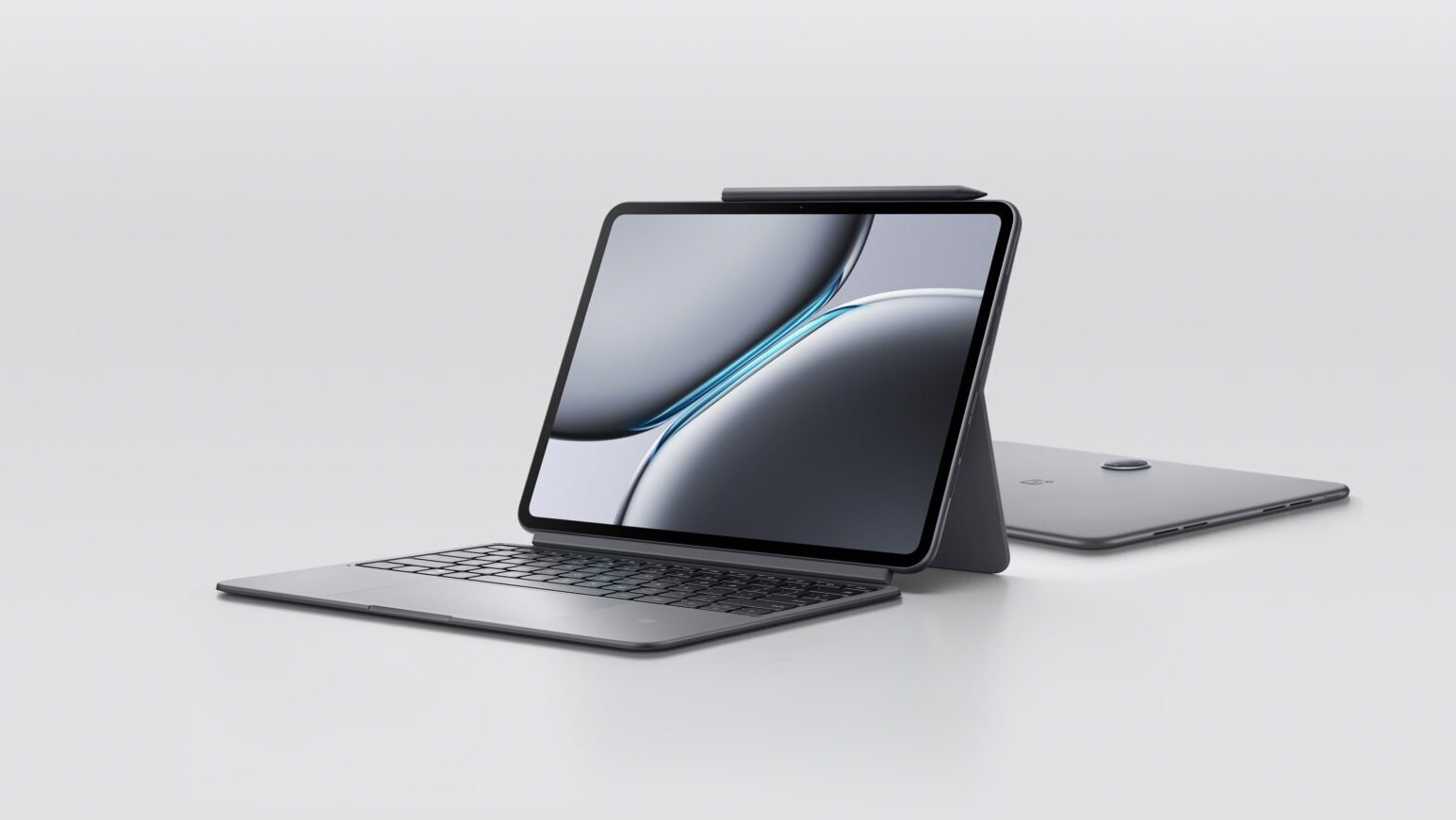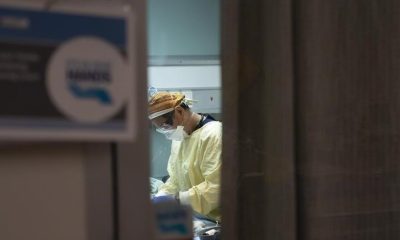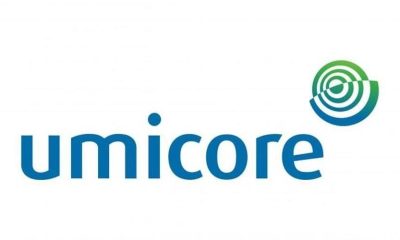Tech
New Quantum Algorithms Institute at SFU to position B.C. as world leader in quantum computing – Simon Fraser University News

This October, the provincial government announced it will invest $17 million over the next five years to establish a new Quantum Algorithms Institute hosted at Simon Fraser University’s Surrey campus, serving as the core of the city’s new innovation corridor.
It is a major advancement for a university already recognized as a global leader in quantum computing—one of the most exciting frontiers in technology.
If quantum computing is still in its infancy, popular understanding of the field is barely at the embryo stage. But that does not stop quantum properties like superposition—the ability of a quantum system to be in more than one state at once—and entanglement—an extremely close relationship between quantum particles—from allowing quantum computers to process a staggering amount of data.
SFU physicist Stephanie Simons, a professor and Canada Research Chair in Quantum Nanoelectronics, heads the university’s Silicon Quantum Technology Group. She explains that algorithms are one of the keys to bringing quantum computing into the mainstream.
Q: The new Quantum Algorithms Institute will see SFU collaborate with research universities across B.C. to devise quantum computing software. What makes algorithms such an important aspect of quantum computing?
Algorithms are the basis of software: they are how computers execute a task and solve a problem. And quantum computing requires very specific kinds of algorithms, taking on very particular kinds of problems. The problems that are naturally suited to quantum computing are the ones that need a lot of computational space, but have very succinct answers. A needle-in-a-haystack kind of problem, for instance.
You can do some pen-and-paper work to show that certain quantum algorithms will be exponentially more efficient at accomplishing some tasks than even the best “classical computer.” And by classical computer, I mean all current and future computers that rely on classical physics, including even the most powerful modern supercomputers.
Q: How do algorithms fit into the bigger picture of quantum computing at SFU?
There is so much work going on here, starting with hardware. In 2013, SFU set the world’s record for the longest-lived quantum bit, or qubit, which is the basic building block underpinning all the quantum hardware that people are trying to develop. That work was led by Emeritus Professor Mike Thewalt. Collaborating with him on that project played a big part in attracting me to SFU. SFU has global prominence in the field of silicon-based qubits, which is the hardware platform that Mike and I are running with—and which are arguably the best qubits in the industry. SFU also has an ion trap quantum computing lab and a cold-atoms quantum computing lab.
There is a sector of people working with existing quantum hardware, too. Various SFU professors have collaborated with Burnaby-based D-Wave Systems, which has an adjunct professor in the Physics Department, Mohammad Amin. They are the first company to create a kind of commercial quantum computer. Other professors collaborate with algorithm-focused 1QBit, another quantum startup in Vancouver. And there are others on the application side, thinking about cryptography and about adapting the quantum algorithms we know now to areas like health care and finance.
And more fundamentally SFU has lots of history in the field of “quantum foundations,” improving our understanding of various interpretations of quantum mechanics (this is related to all that stuff about the so-called “multiverse”). It is exciting to be part of this space right now, because there is a lot of cross-pollination.
Q: How does this translate into real-world benefits today?
In analogy to classical computers, we are kind of at the point when the original transistor was built. It has taken 40 years for it to get to the point where we have these supercomputers—smartphones—in our pockets. And the Internet existed for a long time before most people even knew about it, and now none of us can breathe without it. I imagine quantum technologies will likely follow a similar trajectory, but maybe with a more targeted focus.
That said, people working on the pen-and-paper algorithms can already identify areas where we can expect quantum computing to unlock a lot of potential. Finance is one. And cryptography as we know it will be completely different: quantum computers can very efficiently take apart most of our current encryption standards, and they also offer better (physically unhackable!) encryption.
Chemical simulations are another natural application area. Chemicals themselves are quantum objects, and classical techniques of modelling them are inherently bad in some ways. So we will be able to get a much better look at how one molecule interacts with another. I imagine drug development will be a much better process, and so will simulating the behaviour of materials.
Q: It sounds like this dovetails with work that we are doing around the Data for Good campaign.
Absolutely. Any research sector that relies on high-performance computing—directly or indirectly—could potentially benefit. A lot of application areas will probably even have “black box” advantages, where the quantum algorithm to solve a problem somehow works, but we do not exactly know how! We truly do not know yet what the impact will be. It is going to be a lot of fun to see how it shakes out.
See the SFU News story about SFU receiving $17 million to establish the Quantum Algorithms Institute.
Tech
New photos reveal more details about Google’s Pixel 9 Pro Fold

Google’s secret new line of Pixel 9 phones isn’t that big of a secret anymore. Taiwan’s National Communications Commission (NCC) released new photos of the phones including the Pixel 9 Pro Fold from almost every conceivable angle.
Android Authority found the photos in the NCC archives and uploaded galleries of each of the four phones including the Pixel 9, 9 Pro, 9 Pro XL and 9 Pro Fold. They reveal some interesting details about the new Pixel phones.
The charging rates will be a little faster than the last generation of Pixel phones: Taiwanese authorities measured 24.12W for the base model, 25.20W for the Pro and 32.67W for the 9 Pro XL. The Pixel 9 Pro Fold, however, was the slowest of all of them at 20.25W. These numbers don’t often match up perfectly with the advertised ratings, so expect Google to be promoting higher numbers at its event.
Speaking of chargers, it looks like Google needed a bigger charger to power its new phones. Photos included in the NCC leak show each phone will come with a wall charger that’s around 45W depending on which model you purchase. The charger’s plug moved from the middle to the top of the brick.
The latest photo dump also shows the 9 Pro Fold unfolded for the first time. Google has moved the selfie camera to the inside screen for a wider field of view. The 9 Pro Fold also has a slimmer top and bottom, a reduced fold crease on the display and a full 180 degree unfolding angle to make a screen that’s just over 250mm or just under 10 inches.
These photos are the latest in a very long list of leaks of Google Pixel 9 photos. The last Pixel 9 leak came down yesterday showing two prototype models of the base and XL models. Google might look into buying a new combination lock for the high school locker where they apparently keep all their unreleased gear.

Tech
Apple Wallet now supports Canada’s Presto card, with Express Transit

Apple Wallet now supports the Presto transit card used in Ontario, Canada. The card can be used for travel in Toronto, Hamilton, and Ottawa.
The digital version of the card includes the Express Transit Pass feature, meaning that you can tap in and out without having to authenticate …
Ontario’s Presto card
The Presto contactless smart card system was first trialled back in 2007, and started the full rollout in 2009. The card can be used across 11 different transit systems in the areas covered.
Apple Wallet support was first promised many years ago, but things went quiet until a “coming soon” announcement back in May of this year.
Although the contactless terminals allow the use of credit and debit cards for regular fares, a Presto card is needed for monthly passes and discounted travel.
Apple Wallet support now available
The company made the announcement today.
Tap to ride with PRESTO on iPhone and Apple Watch.
Traveling around town just got easy with your PRESTO in Apple Wallet. With Express Mode, you don’t need to wake or unlock your iPhone or Apple Watch or open any apps to use PRESTO in Apple Wallet. Just hold your device near the reader to pay and go.
Ride, even when your iPhone needs a charge
If your iPhone needs a charge, PRESTO Card in Apple Wallet will still work. Power Reserve provides up to five hours of support, so you can still ride.
Reload on the go.
With your PRESTO card on your iPhone and Apple Watch, you can easily load funds, right from Apple Wallet or PRESTO App. No need to visit a customer service outlet.
Extra security. Built right in
PRESTO in Apple Wallet can take full advantage of the privacy and security features built into iPhone and Apple Watch. Your PRESTO card is stored on the device, which means Apple does not see when you use it—helping keep your data private and secure.
If you lose your iPhone or Apple Watch, you can use the Find My app to lock and help locate the device and suspend your PRESTO card or remotely erase the device and its cards.
Mobile Syrup reports that you can choose between adding your existing card to your Wallet, or creating a new one.
There are two ways to add a Presto card to Apple Wallet. You can either buy a new card or move your old one over using the Presto app.
That being said, for simplicity’s sake, unless you have a discounted Presto agreement like a student or senior plan, I think most riders will be happy just making a new card in Apple Wallet and loading funds from that app.
As with any digital card or pass, you can use either your iPhone or Apple Watch, but because each generates a unique virtual card number, you need to use the same device at both ends of your journey.
Express Transit feature
To minimize delays, Presto offers Express Transit support. This means that you don’t need to authenticate using Face ID or Touch ID on your iPhone, and you don’t need to double-tap the side button on your Apple Watch. Simply hold your device close to the pad and you’re good (a number of clues are used to detect fraudulent use).
Express Transit also has the advantage that it continues to work in Low Power mode, so you’ll still be able to complete your journey even if your phone or Watch is almost dead.
Image: Presto

Tech
The OnePlus Pad 2 Wants to Be the iPad Air of Android Tablets

The original OnePlus Pad was a decent all-around Android tablet, but it was not amazing in any one area. Now, OnePlus is back with a new tablet device that packs more power, has a better screen, more speakers, and a higher starting price. OnePlus offers an Android tablet alternative that costs less than the latest iPad Airs, though it seems like it’s hewing very close to the rendition from 2023.
The OnePlus Pad 2 is a one-size-fits-all 12.1-inch 3K tablet. At $550 for 12 GB of RAM and 256 GB of storage, it’s $70 more than the first OnePlus Pad, though it starts with more memory and twice as much internal storage as the first go around’s paltry 128 GB. It’s bigger than the 11.6 LCD on last year’s Pad, though now it’s beefed its resolution to 3K (3000 x 2120) with a stated 600 nits typical and 900 nits peak brightness. It has a variable refresh rate between 30 and 144 Hz, though it’s still an LCD screen, the same as the 2023 OnePlus Pad.
Just like last year’s version, the new Pad supports Dolby Atmos, but it boasts a six-stereo speaker configuration on either side of the device. It may not be as specifically sound-tailored as the Lenovo Tab Plus, but what’s promised is a solid middle ground.
Last year’s tablet used MediaTek Dimensity 9000 CPU, which was good enough for most applications but not exactly top of its class. The Pad 2 is now powered with the Qualcomm Snapdragon 8 Gen 3 mobile chip. Gizmodo has already experienced some of the chip’s capabilities in Samsung’s latest foldables, and already it’s very promising. We haven’t yet had the chance to compare a Snapdragon 8 Gen 3 tablet to Apple’s latest iPad Air with M2, though on the whole, M2 usually performs better than Qualcomm’s mobile chips in bare benchmark tests. How much that matters depends on what programs you expect to use on your tablet.
Every device maker thinks they need AI to compete, and OnePlus isn’t an outlier here. There are promised “AI Toolbox” features like AI text-to-speech and recording summaries. The AI Eraser 2.0 will also work like Google’s Magic Eraser to remove unwanted photo elements.
There’s a new $99 OnePlus Stylo 2 and a $150 Oneplus Smart Keyboard to accompany the new tablet. Despite the size and price difference, there will be many similarities between last year’s and the 2024 model. The Pad 2 has the same 9,510 mAh battery as last year’s, plus the 67W “SUPERVOOC” fast charging. It promises 43 days of standby time, though in our experience, the first Pad’s lifespan and promised “one-month standby life” was far more modest in practice, lasting most of the day before needing a recharge.
With a bigger screen, the upcoming Pad 2 is slightly heavier than last year’s rendition. It weighs about 1.3 pounds, so it’s exactly between the 11- and 13-inch iPad Airs or slightly more than the base 11-inch Galaxy Tab S9 (and far less than the humongous Tab S9 Ultra). It will be relatively thin at 6.49 mm, but it’s not beating the iPad Air’s 6.1 mm or the iPad Pro 13-inch’s holy grail 5.1 mm.
The first OnePlus Pad didn’t exactly break new ground in any one category, though it did show Android tablets had legs. We’ve seen attempts from Goole and its Pixel Tablet, though that, too, wasn’t the pioneer of Android tablets. A better chip and more speakers do seem promising, though, in its effort to be everything to everyone, we’ll need to see if it manages to stand out in any area.
The OnePlus Pad 2 is now available for preorder. It should be available on the OnePlus website starting July 30 and on Amazon starting August.

-

 News10 hours ago
News10 hours agoAfter grind of MLS regular season, Toronto FC looks forward to Leagues Cup challenge
-

 News24 hours ago
News24 hours agoCanadaNewsMedia news July 26, 2024: B.C. crews wary of winds boosting wildfires
-

 News15 hours ago
News15 hours agoOntario expanding access to RSV vaccines for young children, pregnant women
-

 News11 hours ago
News11 hours agoIn President Milei’s sit-down with Macron, Argentina says the leaders get past soccer chant fallout
-

 News9 hours ago
News9 hours agoUmicore suspends construction of $2.76B battery materials plant in Ontario
-

 News23 hours ago
News23 hours agoPeople should stay inside, filter indoor air amid wildfire smoke, respirologist says
-

 News18 hours ago
News18 hours agoFederal grand jury charges short seller Andrew Left in $16M stock manipulation scheme
-

 News20 hours ago
News20 hours agoSuspected train sabotage, bad weather dampen spirits ahead of Paris opening ceremony





















